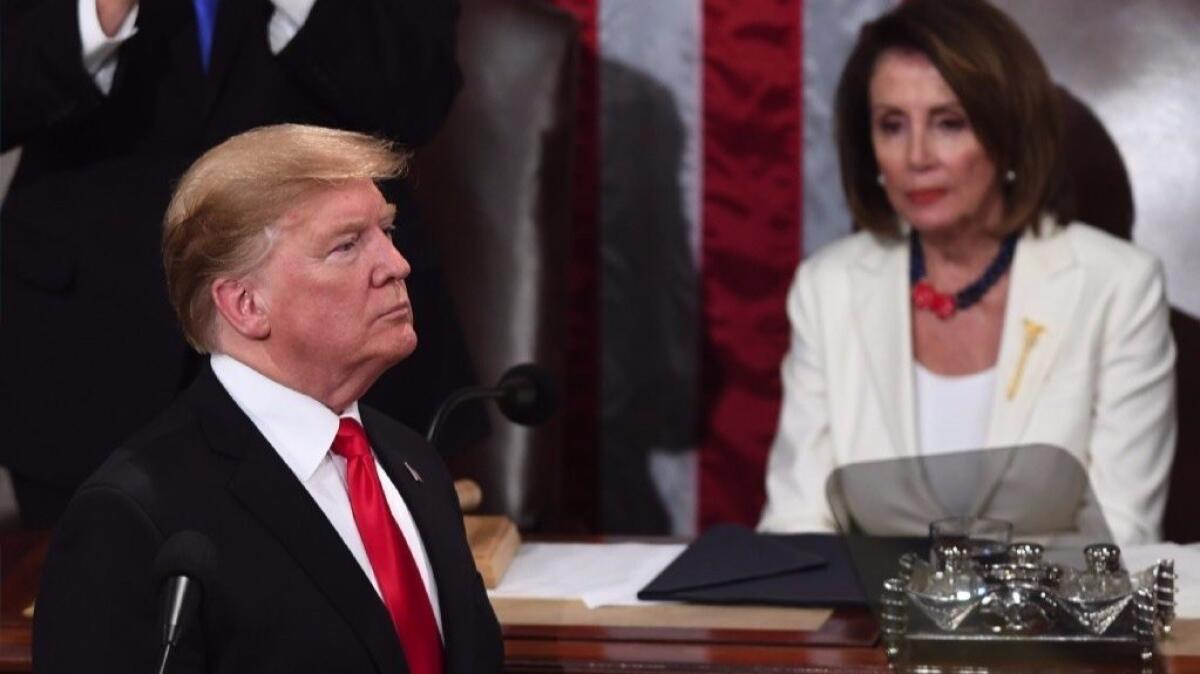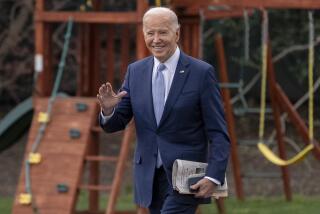Lawmakers announce a deal to prevent another government shutdown, but prospects remain uncertain

Reporting from Washington — Lawmakers late Monday reached an agreement in principle on border security that would allow them to fund the government beyond Friday, according to congressional officials from both parties.
Major parts of the government would shut down as of this weekend without a deal. The agreement to avert the shutdown will still have to be approved by both chambers of Congress and signed by President Trump.
The deal, which congressional aides warned was only tentative, would provide $1.375 billion for border barriers, according to a senior congressional aide who confirmed details but was not authorized to be quoted by name.
The plan would fund not only the Department of Homeland Security — the center of the political dispute over border funding — but also several other agencies that were forced to shut down in December and January.
The money the deal would provide for fencing would be far less than the $5.7 billion Trump had demanded. In return, Democrats dropped their demand for a reduction in the number of people that immigration enforcement officials could hold in detention.
At a rally in El Paso on Monday night, Trump said he had not yet seen the details of the proposed deal because it was reached as he was preparing to go onstage.
“I said, wait a minute, I’ve got to take care of my people from Texas. I got to go. I don’t even want to hear about it,” he said. “I don’t know what they mean ‘progress is being made.’”
Later, however, he said the reports could represent “good news.”
“Just so you know, we’re building the wall anyway,” he added.
Whether the bill can be approved by the full Congress remains unclear. Some liberal Democrats are unlikely to welcome new funding for a border fence. Conservative Republicans may balk at funding only a portion of Trump’s original $5.7-billion demand.
Over the weekend, top members of Congress and an administration official said the talks had broken down. But coming off a record 35-day shutdown, there has been little appetite in either party in Congress for another halt in federal operations.
The money in the compromise proposal could be used for building about 55 new miles of border barriers. The construction would be in the Rio Grande Valley, according to the congressional official, and any currently used design — such as steel slats — would be allowed.
Trump based much of his 2016 campaign on his promise to build a wall along the southern U.S. border. He said Mexico would pay for it. The $1.375 billion the deal includes for border fencing would be less than the amount Senate Democrats had approved last fall, before the shutdown.
The agreement, however, would not place a cap on the number of immigration arrests U.S. Immigration and Customs Enforcement, or ICE, could make in the interior of the country.
Democrats had proposed placing a limit of 16,500 on the number of detention beds that could be used for people taken from the interior of the U.S. That cap had become a primary cause of the impasse over the weekend.
Democrats argued the limit would force ICE to focus its efforts on immigrants with serious or violent criminal records rather than long-term residents without any other criminal history. Republicans argued a cap on the number of people held in detention would force the agency to release violent criminals into American communities.
In fiscal 2018, Congress funded the overall number of detention beds at 40,520 beds — a quota that ICE has treated as a minimum rather than a ceiling, regularly holding more than 48,000 in custody.
Democrats initially proposed dropping the funding to a total to 35,520 detention beds, but ultimately have settled on funding for roughly 45,500, according to the senior congressional aides, with flexibility for more beds, if needed.
Border showdown: Trump and Beto O’Rourke hold dueling rallies on immigration in El Paso »
More to Read
Get the L.A. Times Politics newsletter
Deeply reported insights into legislation, politics and policy from Sacramento, Washington and beyond. In your inbox three times per week.
You may occasionally receive promotional content from the Los Angeles Times.












